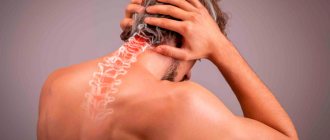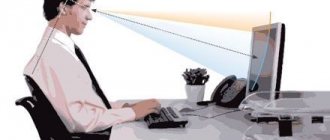Otolaryngologist for adults and children
Manevich
Igor Semenovich
Experience 26 years
Otorhinolaryngologist of the highest category, member of the European Rhinologic Society
Make an appointment
The bones of the human skull have cavities called sinuses or paranasal sinuses. Sinusitis is the general name for inflammation of these sinuses. The disease has several varieties. One of the most severe forms of sinusitis is frontal sinusitis. This is an inflammation of the mucous membrane of the frontal sinus. It is sometimes called frontal sinusitis.
Sinus diseases are very common. They account for about 24-32% of all cases when a patient is sent to a hospital for treatment due to pathologies of the ENT organs. About 14% of the adult population suffers from various forms of sinusitis, of which 3-5% are due to frontal sinusitis. It is more common between the ages of 16 and 35, with approximately 60% of the total number of patients being men.
Frontal sinusitis is a dangerous disease, so it should not be treated like a common cold. The disease can lead to serious complications, including:
- meningitis;
- sepsis;
- osteomyelitis (purulent melting of the frontal bone);
- orbital abscess with transition to the orbit;
- periostitis (inflammation of the tissues surrounding the bone).
The development of phlegmon is dangerous due to complete loss of vision and even death. This occurs if an infection has entered the blood and caused it to become infected. Also, with frontal sinuses, inflammation can spread to other sinuses, causing sinusitis, ethmoiditis or labyrinthitis.
Pain above the eyebrows - causes
Trigeminal neuralgia
Trigeminal neuralgia is a condition that causes sharp, intense pain in the facial area. The trigeminal nerve connects the brain to the face, allowing a person to sense touch and changes in temperature.
Trigeminal neuralgia usually affects only one side of the face, but in rare cases it can affect both sides.
Some people with this condition may experience stabbing pain that feels like an electric shock. Others may have constant pain and burning in the facial area.
Treatment of headaches in both eyes and eyes
The main condition for effective treatment of headaches is timely consultation with a doctor. It is impossible to choose the right regimen on your own, since only painkillers that relieve the symptoms of the disease are available at home. Additionally, the following methods may be prescribed:
- drugs for the correction of increased intracranial and blood pressure, including systemic use of diuretics;
- Antibiotic therapy is the basis for the treatment of inflammatory diseases;
- medications to improve blood supply to the brain;
- selection of glasses or lenses by an ophthalmologist, drops to eliminate dryness and inflammation of the mucous membrane;
- symptomatic treatment for additional manifestations of diseases - may include antipyretics, vitamins and other drugs.
The Clinical Brain Institute offers individual programs for diagnosing and treating headaches in the forehead and eyes. The main advantages of the center are the possibility of inpatient and outpatient observation, highly qualified specialists, accurate and modern equipment.
Clinical Brain Institute Rating: 4/5 — 5 votes
Share article on social networks
Cluster headache
A cluster headache is a severe headache that can occur one to eight times a day and last from 15 minutes to 3 hours each time.
People may experience stabbing pain, often either behind the eyebrow and eye, or around the temples. This pain and other symptoms usually affect one side of the head.
Cluster headache symptoms
- red, watery eyes;
- runny nose;
- flushed face;
- drooping eyelid;
- hyperkinesis;
- inability to lie still.
Shingles
Shingles is a condition that affects the nerves. It occurs in localized areas, usually on one side. These areas may include the face and neck.
Symptoms of herpes zoster
- a painful, fluid-filled rash;
- shooting pain;
- tingling or numbness sensation;
- burning;
- itching;
- fever and chills;
- nausea;
- headache;
- loss of vision.
People should see a doctor immediately if they notice blisters on their face, especially if they are close to the eyes.
Treatment
Elimination of pain in the corners of the eyes is possible only after identifying the cause that caused it. Only a specialist can help with this during a diagnostic examination of the organ of vision. To relieve discomfort, you can independently apply moisturizing drops and cold compresses to the eye area.
However, it is necessary to remember that you should not delay your visit to the doctor, and pain in the eyes, accompanied by decreased visual acuity, redness of the eyes and photophobia, require immediate attention.
In the medical department, everyone can undergo examination using the most modern diagnostic equipment, and based on the results, receive advice from a highly qualified specialist. The clinic provides consultations to children from 4 years old. We are open seven days a week and work daily from 9 a.m. to 9 p.m. Our specialists will help identify the cause of vision loss and provide competent treatment of identified pathologies.
You can find out the cost of a particular procedure or make an appointment at the Moscow Eye Clinic by phone (daily from 9:00 to 21:00, free for mobile phones and regions of the Russian Federation) or using the online registration form.
Yakovleva Yulia Valerievna
Sinusitis
Sinusitis is an inflammation of the sinuses. This can put a lot of pressure on the facial area and people may feel pain around the eyebrows, nose, forehead and cheeks.
Symptoms of sinusitis
- stuffy nose;
- cough;
- thick, yellow or green mucus from the nose;
- mucus running down the throat.
Sinusitis can be either acute or chronic. Symptoms of acute sinusitis usually resolve within a week or 10 days. If symptoms do not improve with treatment and last longer than 12 weeks, a person may develop chronic sinusitis.
Diagnosis of frontal sinusitis
To make a diagnosis, the patient is subjected to a comprehensive examination. At the first stage, the doctor carries out:
- physical examination. The doctor notes the characteristic symptoms of frontal sinusitis: swelling, pain and redness in the bridge of the nose. The specialist applies pressure to this area to see if the pain gets worse;
- examination of the nasal cavity. The test is called rhinoscopy. It is necessary to detect purulent exudate in the nose, which drains from the front of the nasal passage. The doctor also notes that there is redness and swelling of the mucous membrane.
If necessary, the nasal cavity can be examined using an endoscope. This is a special device with a flexible tube, which is inserted into the nose to examine the mucous membrane. Additionally, frontal sinusitis diagnostics includes:
- X-ray of the paranasal sinuses. This diagnostic method is considered the leading one in detecting frontal sinusitis. To get the most complete picture of the condition of the paranasal sinuses, doctors take x-rays in 3 projections;
- computed tomography of the paranasal sinuses. If the X-ray does not produce results, then doctors do a tomogram. On it you can clearly see all the changes in the bone structures and the entrance channel of the sinuses;
- bacteriological research. It is necessary to detect the causative agent of the disease. Before bacterial culture of the patient, the doctor prescribes broad-spectrum antibiotics to the patient, and after receiving the test results, he adjusts the therapy by prescribing a medicine against a specific pathogen. For research, samples of sinus tissue obtained by puncture or nasal discharge are used.
In acute frontal sinusitis, making a diagnosis is not difficult. The difficulty may lie only in detecting the pathogen. That is why specialists study the patient’s nasal discharge.
Temporal arteritis
Giant cell arteritis, or temporal arteritis, is a condition that affects the blood vessels along the side of the head.
Inflammation of these blood vessels can cause facial pain and other symptoms such as:
- jaw pain;
- temporary loss of vision;
- fever;
- severe headaches;
- dizziness;
- difficulty swallowing or sore throat.
According to the Arthritis Foundation, people over 50, especially women, are more likely to develop giant cell arteritis.
Treatment and home remedies
Treatment for eyebrow pain depends on the cause:
- Headaches and migraines: Painkillers, as well as more rest and sleep, may help.
- Severe or frequent migraine episodes: Your doctor may prescribe pain medications.
- Cluster headaches: Your doctor may recommend pain medications or an oxygen mask to prevent a cluster headache.
- Shingles: Rest, a cool compress, and calamine lotion can help soothe the symptoms of shingles until the infection clears up.
- Glaucoma: Taking eye drops daily may help prevent vision loss in people with glaucoma. Beta blockers and alpha agonists also help reduce fluid buildup in the eye.
- Sinusitis: Patients can take anti-inflammatory medications and nasal sprays to treat sinusitis. Pain medications, adequate rest, and proper hydration may also help reduce symptoms.
- Trigeminal neuralgia: Your doctor may prescribe medications or recommend surgery.
- Giant cell arteritis: Corticosteroids can effectively treat the symptoms of giant cell arteritis.
Advantages of treatment at the clinic of JSC "Medicine"
Everyone who comes to the clinic of JSC "Medicine" undergoes an examination in accordance with medical standards. This helps to accurately identify the cause of the disease and prescribe effective treatment. By contacting JSC “Medicine”, you can be confident in the provision of quality services. Each patient here receives:
- Personal access to medical history via the Internet.
- A personal curator who will accompany the patient throughout the entire therapy, even if other specialists take part in it.
- An accompanying person for quick movement around the clinic.
- Explanation in clear language about treatment and prescribed medications.
- Possibility of receiving all necessary services on the day of treatment.
- The wait for an appointment is no more than 20 minutes, subject to prior registration.
- Providing examination results on a CD.
The Clinic of JSC "Medicine" is always ready to discuss in case of justified claims. If you were not provided with certain services properly, you can receive financial compensation.
The administration considers any requests, since JSC “Medicine” works on the principle that only the client evaluates the quality of the services provided. This is what became the key to the clinic’s success in providing medical care. Each patient leaves us not only healthy, but also completely satisfied with the services provided.
When to see a doctor?
A person should see a doctor if eyebrow pain is severe, persistent, or accompanied by other symptoms.
People with eyebrow pain should seek immediate medical attention if they also have the following symptoms:
- severe pain or swelling of the face;
- swelling or redness around the eyes;
- confusion or feelings of disorientation;
- sudden severe headache;
- drowsiness;
- fever;
- rash;
- nausea and vomiting.
People should see a doctor if they have symptoms of any of the following conditions:
- shingles;
- giant cell arteritis;
- severe or frequent migraine episodes;
- trigeminal neuralgia;
- glaucoma.
Contraindications for frontal sinusitis
Warming up during frontal sinusitis is not only not useful, but in some cases even dangerous. Heat exposure can only increase swelling. Warming up also creates favorable conditions for further growth of bacteria. Also, the patient may accidentally warm up the lymph nodes, which will also increase inflammation and even lead to complications.
Thermal procedures for frontal sinusitis are allowed only if the patient does not have a fever or purulent nasal discharge. But even here it is important that the treatment occurs under the supervision of a doctor. Only he will be able to determine whether warming up will do any harm at a specific stage of the disease.
What else should not be done if you have frontal sinusitis:
- continue to go to work and maintain your usual lifestyle. In the acute form, it will be difficult for the patient to do this due to severe weakness, but in the chronic form, patients often neglect bed rest. This often leads to complications;
- smoke. It is necessary to give up cigarettes at least for the duration of treatment of the disease. Cigarette smoke irritates the mucous membrane, which only increases its swelling and delays recovery;
- use vasoconstrictor drops for a long time. They can be used for no more than 7-10 days. It is advisable to instill only before bedtime in order to get a good night's sleep. With the constant use of such drops, addiction develops, and the nasal mucosa also grows, which only worsens the course of frontal sinusitis.
Summary
People may experience eyebrow pain for many reasons. Sinusitis or headaches can lead to increased pressure and pain in the eyebrow area, which should go away as soon as the cause is eliminated. Other times, eyebrow pain is due to an underlying condition such as glaucoma.
If people experience frequent or severe pain around the eyebrows or notice other symptoms, they should consult a doctor immediately.
Another article on the topic: Drinking small amounts of caffeine every day does not cause migraines.
Causes of headaches in the forehead and eyes
Pain in the frontal part of the head and eyes is not a separate pathology, but a symptom of various disorders. It can also occur in the absence of any diseases, against the background of fatigue, stress, or prolonged work at the monitor. However, if it occurs frequently, you should undergo a full examination and receive recommendations for treatment.
Eye diseases
Acute and chronic eye diseases are one of the common causes of headaches. They have different development mechanisms and manifest themselves with different symptoms, so it is necessary to carry out their differential diagnosis. Ophthalmological diseases can be congenital or acquired in childhood or adulthood. They can progress, leading to partial or complete loss of vision, so treatment must begin in the initial stages.
- Glaucoma is a syndrome in which swelling occurs inside the eye. It is observed in various diseases, including can be caused by farsightedness and chronic hypertension. In the initial stages, peripheral vision deteriorates, headaches in the frontal part and eyes due to damage to the optic nerve. In the future, glaucoma can progress and lead to complete blindness.
- Myopia (myopia) is a disease in which the image is not on the retina, but in front of it. Objects located at a far distance are difficult to distinguish. For myopia, vision correction is necessary with individually selected glasses or lenses. It is also necessary to perform special gymnastics for the eyes, avoid prolonged work at the monitor and concentration on small details.
- Inflammation of the optic nerve is the cause of acute headaches in the forehead and eyes, and visual impairment. Its cause is often infectious diseases, but a chronic, recurrent course of optic neuritis can be caused by diabetes mellitus. Timely treatment and the prescription of corticosteroids will restore vision, relieve pain and inflammation.
Deterioration of vision, pain in the frontal part of the head and eyes, lacrimation, redness of the conjunctiva, inability to concentrate on near or distant objects - this is a reason to consult an ophthalmologist for an examination. To select glasses or contact lenses, as well as to prescribe a medication regimen, you must undergo additional examinations.
Increased intracranial pressure
If you often have a headache in the frontal area or put pressure on your eyes, you should consult a doctor to diagnose intracranial pressure. It is impossible to measure this indicator at home, since it is determined by indirect methods. Normally, it consists of three components: blood pressure, spinal fluid and the brain tissue itself. An increase in any of them leads to an increase in intracranial pressure and the following symptoms:
- headaches in the temples, forehead and eyes;
- dizziness, weakness, frequent fainting;
- deterioration of hearing and vision, the appearance of various hallucinations;
- nausea and vomiting;
- increased or decreased blood pressure, slow heartbeat;
- development of convulsive syndrome.
Increased intracranial pressure is a common diagnosis in both adults and children. It is diagnosed based on the clinical picture, as well as indirect diagnostic methods. The cause of this disorder may be congenital vascular anomalies, traumatic brain injuries, poisoning and other factors. If the pressure rises slightly and can be corrected with medications, it is enough to take them and undergo periodic examinations. The operation is prescribed only in difficult cases when excess fluid causes oxygen starvation and necrosis of brain cells. This condition is one of the predisposing factors for ischemic stroke and therefore cannot be ignored.
Infectious diseases
One of the most common reasons why the eyes and frontal part of the head hurt is viral diseases. The pathogens most often affect the upper respiratory tract and are transmitted by airborne droplets. Headache becomes one of the first symptoms, after which weakness, fever, and other characteristic signs develop. However, a viral infection can spread to the bronchi and lungs and affect brain cells. There are a huge number of infectious diseases that are highly contagious. Diseases spread by contact of the pathogen with the mucous membrane of the mouth or nose, but a prerequisite for their development is a decrease in the body’s immune defense.
- ARVI (acute respiratory viral infections) is a group of diseases that manifest themselves with similar symptoms. They cause coughing, wheezing, sore throat, runny and watery nose, and fever. The patient often has headaches, forehead and eyes due to swelling of the mucous membranes.
- Sinusitis is inflammation of the maxillary paranasal sinus. If normally there is only air in it, then in case of illness it is filled with liquid or purulent contents. More often, sinusitis is one of the complications of ARVI and requires urgent treatment. Conservative methods include antibiotic therapy and rinsing with saline solutions. If they do not bring results, the doctor may prescribe a puncture of the maxillary sinus, removing its contents and rinsing with solutions containing antibiotics.
- Meningitis is an inflammation of the lining of the brain. This is a dangerous disease that poses a threat to the patient's life. It is caused by viruses, bacteria, and meningitis can also have a traumatic origin. Treatment is carried out in a hospital, under 24-hour medical supervision.
Treatment of infectious diseases is selected individually. Mild forms can be cured at home; all you need to do is stay in bed and take vitamins. However, with meningitis, severe forms of influenza and sinusitis, hospitalization will be required. In a hospital setting, antibiotics, supportive medications, and symptomatic medications are prescribed to reduce fever.
Traumatic brain injuries
One of the reasons why headaches occur in the temples, forehead and eyes is traumatic damage to brain tissue. They can be open or closed. In the first case, the integrity of the skin, skull bones and brain tissue is violated, so treatment is carried out surgically. Even after a long time after such an injury, the patient may experience headaches in the forehead and eyes, as well as various disorders of brain activity.
Closed head injuries are more common. They are no less dangerous for the victim and can cause long-term complications. There are several types of injuries that differ in the mechanism of development and types of damage to brain tissue.
- A concussion is a temporary, reversible disturbance of consciousness due to a bruise, blow or fall. No organic damage is diagnosed, so treatment can be carried out at home. For several days, the patient experiences symptoms such as headache, dizziness, nausea and vomiting, hearing and vision impairment.
- Brain contusion is the result of an unintentional or intentional blow to the head. Light bruises cause temporary impairment of consciousness and headaches. However, treatment must be carried out in a hospital, under the supervision of doctors. Bruises can cause swelling of the brain, increased intracranial pressure and cause a stroke.
- Hematomas are an accumulation of blood in the brain tissue or in the space between the membranes. Their main cause is damage to blood vessels during bruises. Hematomas pose a danger to the patient's life and cause acute impairment of brain function.
Traumatic brain injuries can cause headaches even many years later. Many patients complain that they have a headache in the frontal part, pressure on the eyes during sudden changes in weather conditions or during physical exertion. Treatment is symptomatic and consists of eliminating pain and reducing stress.
Other reasons
Headaches that affect the forehead and eyes can be a sign of various conditions and diseases. When diagnosing, it is important to exclude the possibility of both the most common and rare causes of this symptom. These include:
- physical, emotional fatigue, prolonged lack of proper rest;
- disturbance of sleep and wakefulness, night shift work;
- frequent alcohol consumption, poor diet;
- an increase or decrease in the concentration of certain hormones in the blood.
The cause of headaches can be both common human conditions and dangerous diseases in the early stages. So, during diagnosis, a tumor in the brain or an aneurysm may be detected. Another dangerous disorder that must be taken into account during diagnosis is stroke, an acute disorder of cerebral circulation. Help during an attack is most effective in the first 2–4 hours. Then irreversible changes occur in the functioning of the brain, which can lead to disruption of vital functions, even death.










